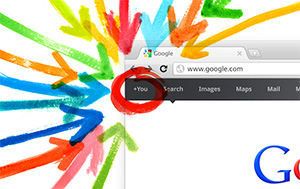 I’m on LinkedIn, now what? That’s a question I hear from time to time. Or, I’ve filled out my profile on LinkedIn and nothing is happening. Those are comments from passive job seekers, those that are sitting back and waiting to be “discovered.”
I’m on LinkedIn, now what? That’s a question I hear from time to time. Or, I’ve filled out my profile on LinkedIn and nothing is happening. Those are comments from passive job seekers, those that are sitting back and waiting to be “discovered.”
LinkedIn is a powerful tool for job seekers, but like any tool, it takes more than just having it in your toolbox, you have to use it. First, you should optimize your LinkedIn profile with your most marketable attributes and skill sets. Include quantifiable successes, key words, a professional picture, recommendations and make sure your profile is 100% complete. For some people, with skills that are in high demand, just having a great profile on LinkedIn can be enough because recruiters do use LinkedIn to mine for candidates.
However, if you’re truly interested in making a career move and doing so in a timely manner it takes time and effort. Spending quality time on LinkedIn can lead to a rewarding position. The following are four tips your competitors who are waiting to be “discovered” are not doing:
1. Build your professional network.
Once you’ve perfected your profile now’s the time to show it off. Reach out to friends, colleagues, alumni, and acquaintances. It’s not necessarily about the quantity of your connections, it’s more about the quality. True, having a lot of connections will give you more information when you run searches on LinkedIn, but having quality connections who you can reach out to for introductions is more effective when you’re trying to network into a company.
2. Use the Advanced Searches.
When you see a job posting anywhere, your first step should be to run an advanced search on LinkedIn and see if your connected to someone at that company. It is about who you know to get your foot in the door. But more importantly, LinkedIn is best if utilized to target the unpublished market by networking. If you’re serious about finding a job, you should be using LinkedIn to build your network and target the unpublished job market.
3. Target and follow companies for whom you’d like to work.
Use the advanced search to target companies and identify people at those companies to connect with. Also, if you follow companies where you’d like to work you’ll see their posted activities including job openings or updates about their business that may inspire you to reach out to them regardless of whether they have an opening. Yes, companies will create positions for the right candidate.
4. Participate in Groups.
You can expand your network on LinkedIn by joining groups in your area of interest and asking to connect to other group members. Additionally, by participating in group discussions you can show off your expertise and become recognized in your industry.
Remember, just having a hammer and some nails won’t get that house built, like everything worthwhile, it takes applying yourself thoughtfully and intentionally to build a solid career.
Linda Lupatkin – The Imagemakers, Ink! LLC – Resumes, Bios, Career Coaching and Consulting


